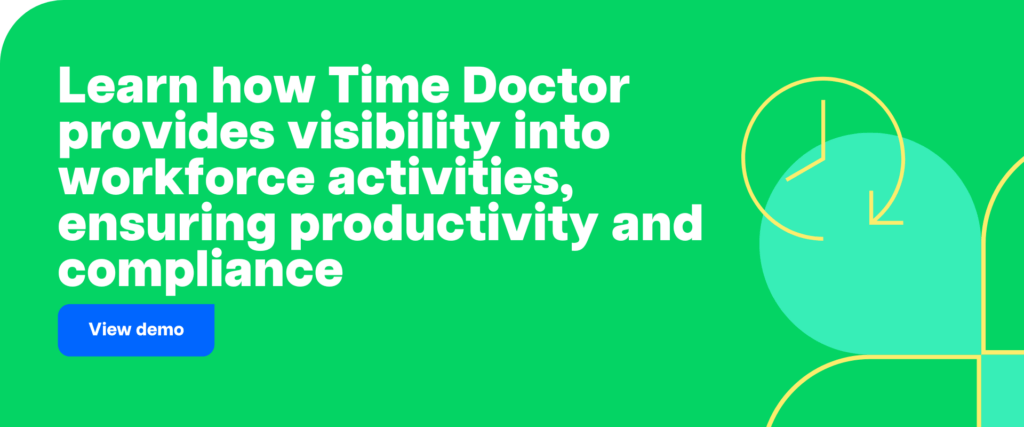We all follow rules as we go about our lives.
Some are enshrined in law. Others are social codes, and some rules we set for ourselves.
It’s no different for businesses. There is a barrage of requirements between regulations, industry standards, client and customer demands, and governance policies.
Adhering to all these requirements is called “compliance.” Workforce compliance is crucial to avoid financial penalties, build stakeholder trust and grow the company.
But with so many overlapping and evolving requirements, the only way to stay on top of everything is with a robust compliance management system.
This guide will delve into the intricacies of compliance management, including the risks of getting it wrong. We’ll also provide practical strategies to help you build a solid compliance foundation for your business.

Table of Contents
- Understanding compliance management
- Why is compliance management important?
- Real-world risks of poor compliance management
- Building a compliance management system (CMS)
- Leveraging technology and tools in compliance management
Understanding compliance management
Compliance management is the systematic process of ensuring your organization adheres to relevant laws, regulations and industry standards.
It involves identifying, assessing and mitigating risks associated with non-compliance.
It’s not just about ticking boxes. Effective compliance management systems and strategies integrate compliance into the fabric of your operations, reduce risk in several key areas, and foster a culture of best practice.
Compliance management systems
Compliance management takes various shapes.
You might design processes, undergo audits, seek employee training and/or use technology to manage compliance across your organization. You might report some outcomes to regulators or industry bodies and track others internally for continuous improvement.
You may even hire specialists to oversee an organization-wide compliance program or engage auditors to evaluate the program’s effectiveness.
All these efforts fall under the umbrella of a “compliance management system” or CMS, a comprehensive collection of compliance-focused policies, documents, tools, controls and functions.
Skip ahead to learn more about building a CMS or keep reading to learn why compliance management is mission-critical.

Why is compliance management important?
While it might seem like a bureaucratic burden, effective compliance management is essential. Getting it right means long-term sustainability and protection from potentially crippling legal and financial risks.
Mitigate risks
Non-compliance costs 2.71x more than compliance on average. Between direct damages, remediation costs, legal fees, investigations and indirect costs, companies are risking a lot by not implementing a compliance management program.
Operational efficiency
Proper compliance management streamlines operations by reducing the risk of disruptions caused by regulatory issues. It also aligns operations with compliance requirements, streamlining process and project management.
Trust and reputation
Adhering to compliance standards is irrefutable proof of responsible business practices. It shows your priorities are in the right place and you have everything under control.
When 93% of executives say that stakeholder trust affects bottom-line results, adhering to compliance standards is crucial.
Decision-making
Compliance data can provide valuable insights into business operations. Analyzing compliance metrics can help identify areas for improvement.
Understanding regulatory requirements also informs strategic decision-making. For example, a company expanding into a new market should factor compliance challenges into its pros and cons list.
Real-world risks of poor compliance management
GDPR data violations
Fines for mishandling personal data under Europe’s GDPR (General Data Privacy Regulations) can reach 2% of annual global turnover or $10.8 million (€10 million), whichever is higher. And regulators are cracking down on compliance.
HIPAA damages
HIPAA (Health Insurance Portability and Accountability Act) non-compliance fines range from $100 to $50,000 per violation, up to an annual maximum of $1.5 million for repeat violations.
Emissions compliance
At least two major car manufacturers are paying multi-million-dollar fines for failing to comply with emissions standards. Interestingly, the penalties – including $1.14 billion for Volkswagen and $180 million for Toyota – focused more on the companies’ failure to report the emissions breaches.
Clearly, big gaps in the compliance programs allowed these issues to remain undisclosed for years.
Minimum wage violations
The UK Government has been cracking down on employers that underpay workers. More than 500 companies were ordered to repay almost £16 million ($20.5 million) to 172,000 affected employees – plus additional penalties.

Building a compliance management system (CMS)
Compliance is complex, affecting every corner of your business. It’s impossible to effectively manage compliance through a single control, or concentrate compliance management in a single team.
Instead, compliance management must be everyone’s responsibility.
Building a culture of compliance requires a clear, comprehensive and goal-oriented compliance management system (CMS, not to be confused with a Content Management System).
To refresh your memory, a CMS is the overarching framework of procedures, documents, tools, controls and checks that help your organization adhere to all requirements.
A well-structured CMS not only mitigates the risk of non-compliance but also fosters a culture of integrity and accountability.
Here’s how your organization can evolve from single-point compliance checks to a culture of compliance built on a solid CMS.
1. Establish compliance objectives
Clearly define your organization’s compliance goals and align them with overall business objectives.
These goals will guide the development and implementation of your compliance management system.
Tethering compliance to performance in this way also helps to earn leadership support, which will be crucial in executing an effective compliance management system.
2. Identify applicable laws and regulations
Identify the legal, regulatory and industry-specific requirements relevant to your organization. This ensures that your compliance efforts are tailored to meet the specific obligations you must adhere to.
Remember that GDPR can apply to non-EU companies, and HIPAA can cover non-healthcare entities. Consult a compliance specialist if you’re unsure which regulations apply.
3. Conduct a risk assessment
Evaluate potential compliance risks in your operations, reporting, data management and employee dealings.
Prioritize them based on impact so you know where to start with mitigation strategies.
4. Develop policies and procedures
Create clear, detailed policies and procedures that address the identified risks and ensure compliance.
These documents should be:
- Updated regularly
- Communicated throughout the organization
- Easy to access
- Tailored to team or role-specific compliance requirements
Compliance policies are often bundled into a governance structure with roles and responsibilities clearly defined. This makes compliance management an actionable, everyday priority, rather than a boardroom talking point.
5. Assign compliance responsibilities
Accenture’s latest report found that 95% of compliance professionals are focused on building a “culture of compliance” in their organizations.
Designating (or hiring) compliance management champions is a significant step toward raising the profile of compliance within your company.
Depending on your industry compliance management requirements, this might look like:
- Appointing a Chief Compliance Officer
- Hiring compliance specialists
- Forming cross-departmental compliance teams
6. Implement employee training
If compliance is everyone’s responsibility, then everyone must understand their role.
Provide thorough training to all employees on compliance policies, procedures, and expectations. Regularly update this training to reflect changes in regulations and internal policies.
Read more: Compliance training guide for modern workplaces.
7. Establish monitoring and auditing procedures
Demonstrating compliance with some standards – such as SOC 2 compliance – requires an audit.
For others where there is no formal monitoring in place, you may need to design your own monitoring system. This could look like:
- Identifying compliance KPIs (see step 1)
- Integrating these KPIs into existing performance/workforce analytics
- Implementing tracking systems to close intelligence gaps
- Communicating progress towards targets (see step 4)
- Analyzing the barriers and enablers
- Continuously improving on compliance management
Compliance management is not set-and-forget. Dynamic procedures and flexible systems ensure your compliance champions can identify gaps and keep up with changing requirements.
8. Implement incident management and response plans
Compliance violations hurt, but most organizations can survive. If, that is, they disclose the incident within the required timeframes and address the underlying issues promptly.
Develop procedures for handling compliance breaches. Map out the steps to identify, report, investigate, respond to, and correct the mistake, including key people responsible at each step.
9. Document, report and record compliance activities
Maintain detailed records of all compliance activities, including training, audits, and incident management. Regularly report on compliance performance to senior management and relevant stakeholders.
Even if your organization isn’t required to report publicly, transparency is a good look. It builds trust and reinforces your commitment to accountability.
10. Review and improve the compliance system
Continuously review your compliance management system to ensure it remains effective and up to date with changing regulations.
Use feedback, audit results and performance data to identify areas for improvement and make necessary adjustments.
Leveraging technology and tools in compliance management
Given the complexity of compliance management, it’s not surprising that compliance management software is a growing market. Estimates put the compound annual growth rate (CAGR) at 11.2% to 2030.
Compliance management software centralizes data and insights, enabling large and diverse organizations to monitor compliance in real-time.
These tools do more than house documents. They offer comprehensive features to manage policies, conduct audits, track evolving regulations and report on compliance.
It’s also not surprising that 54% of compliance professionals say AI will play a role in strengthening compliance – although many believe technology is equally disruptive and productive.
The key is collaborating with technology.
Making software a partner in compliance management – rather than a standalone solution – will reduce human error, streamline compliance management, and ensure issues are found fast.
However, all this tech-enabled evolution depends on solid workforce data. This is where workforce analytics becomes essential.
Time Doctor’s role in compliance management

Integrating workforce analytics into your compliance management system provides a reliable source of real-time employee performance data.
These insights are essential for compliance management.
Understanding where and how your team works enables more efficient and effective compliance management.
- Time tracking helps you adhere to labor regulations, such as overtime laws and time-off policies
- Detailed reports streamline the process of compliance audits and investigations
- Activity monitoring features enable managers to identify potentially non-compliant behavior, including suspect website and app usage
- Unusual Activity Reports (UAR) highlight potentially non-compliant behavior, including unauthorized machine access
Time Doctor also integrates with 60+ business apps, including payment tools, project management platforms and CRMs. This end-to-end visibility ensures you can monitor activity across your entire organization and identify potential compliance issues, like mishandling data or unsecured transfers.
Time Doctor is an essential tool in effective compliance management systems. Our features comply with GDPR, HIPAA, ISO 27001 and soon SOC 2, and we take security extremely seriously.
Learn more about how Time Doctor can help with security and compliance. You can view a demo below.

Liam Martin is a serial entrepreneur, co-founder of Time Doctor, Staff.com, and the Running Remote Conference, and author of the Wall Street Journal bestseller, “Running Remote.” He advocates for remote work and helps businesses optimize their remote teams.


